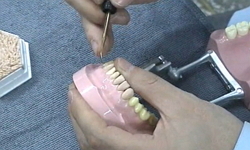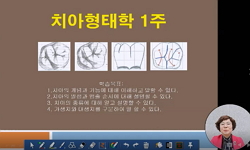Crossosomatales is a recently recognized order in the rosid II clade with about 64 species in eight morphologically distinct families that have been previously classified in as many as 15 other orders. Phylogenetic relationships among the families and...
http://chineseinput.net/에서 pinyin(병음)방식으로 중국어를 변환할 수 있습니다.
변환된 중국어를 복사하여 사용하시면 됩니다.
- 中文 을 입력하시려면 zhongwen을 입력하시고 space를누르시면됩니다.
- 北京 을 입력하시려면 beijing을 입력하시고 space를 누르시면 됩니다.


Phylogeny and systematics of Crossosomatales as inferred from chloroplast atpB, matK, and rbcL sequences
한글로보기부가정보
다국어 초록 (Multilingual Abstract)
Crossosomatales is a recently recognized order in the rosid II clade with about 64 species in eight morphologically distinct families that have been previously classified in as many as 15 other orders. Phylogenetic relationships among the families and genera within Crossosomatales were investigated using chloroplast atpB, matK, and rbcL sequences employing maximum parsimony, maximum likelihood, and Bayesian methods. The phylogenetic framework was used to examine the patterns of morphological evolution and synapomorphies for subclades within Crossosomatales. The combined data with representative species from all genera in the order strongly supported monophyly of Crossosomatales. Strong support was found for the families in the Southern Hemisphere, in which Aphloiaceae is sister to the clade of (Geissolomataceae, (Ixerbaceae + Strasburgeriaceae)).
The sister relationship between the Southern Hemisphere clade and families distributed primarily in the Northern Hemisphere was also supported. As in the previous studies, following relationships were found within the Northern Hemisphere clade: Staphyleaceae is sister to a clade of (Guamatelaceae, (Stachyuraceae + Crossosomataceae)). The pattern analysis indicates that evolutionary pattern of morphological characters is complex, requiring multiple changes within Crossosomatales. Several reproductive traits, such as inflorescence, aril, stigma, and conspicuous protrusion from pollen aperture, corroborate the molecular phylogeny.
참고문헌 (Reference)
1 Weber, M., "‘Pollen buds’ in Ophiorrhiza (Rubiaceae) and their role in pollenkitt release" 107 : 187-270, 1994
2 Stevens, P. F., "onwards. Angiosperm Phylogeny Website, Version 6, May 2005 [and more or less continuously updated since]"
3 Carquist, S., "Wood anatomy of Crossosomatales: patterns of wood evolution with relation to phylogeny and ecology" 24 : 1-18, 2007
4 Takhtajan, A., "Systema Magnoliophytorum" Nauka 1987
5 Dikison, W. C., "Strasburgeriaceae, In The Families and Genera of Vascular Plants" Springer 446-448, 2007
6 Simmns, S. L., "Staphyleaceae, In The Families and Genera of Vascular Plants" Springer 440-445, 2007
7 Li, D., "Staphyleaceae, In Flora of China, vol. 11 (Oxalidaceae through Aceraceae)" Science Press 498-504, 2008
8 Qiner, Y, "Stachyuraceae. In Flora of China, vol. 11 (Oxalidaceae through Aceraceae)" Science Press 138-140, 2007
9 Shan, H. R., "Stachyuraceae, In Flora Reipublicae Popularis Sinica, vol. 52 (1)" Science Press 81-96, 1999
10 Wang, H. C., "Rosid radiation and the rapid rise of angiospermdominated forests" 106 : 3853-3858, 2009
1 Weber, M., "‘Pollen buds’ in Ophiorrhiza (Rubiaceae) and their role in pollenkitt release" 107 : 187-270, 1994
2 Stevens, P. F., "onwards. Angiosperm Phylogeny Website, Version 6, May 2005 [and more or less continuously updated since]"
3 Carquist, S., "Wood anatomy of Crossosomatales: patterns of wood evolution with relation to phylogeny and ecology" 24 : 1-18, 2007
4 Takhtajan, A., "Systema Magnoliophytorum" Nauka 1987
5 Dikison, W. C., "Strasburgeriaceae, In The Families and Genera of Vascular Plants" Springer 446-448, 2007
6 Simmns, S. L., "Staphyleaceae, In The Families and Genera of Vascular Plants" Springer 440-445, 2007
7 Li, D., "Staphyleaceae, In Flora of China, vol. 11 (Oxalidaceae through Aceraceae)" Science Press 498-504, 2008
8 Qiner, Y, "Stachyuraceae. In Flora of China, vol. 11 (Oxalidaceae through Aceraceae)" Science Press 138-140, 2007
9 Shan, H. R., "Stachyuraceae, In Flora Reipublicae Popularis Sinica, vol. 52 (1)" Science Press 81-96, 1999
10 Wang, H. C., "Rosid radiation and the rapid rise of angiospermdominated forests" 106 : 3853-3858, 2009
11 Swofford, D. L., "Phylogeny reconstruction, In Molecular systematics, Ed. 2" Sinauer Associates 407-514, 1996
12 Savolainen, V., "Phylogenetics of flowering plants based on combined analysis of plastid atpB and rbcL gene sequences" 49 : 306-362, 2000
13 Sosa, V., "Phylogenetics of Crossosomataceae based on rbcL sequence data" 28 : 96-105, 2003
14 Christenhusz, M. J. M., "Petenaeaceae, a new angiosperm family in Huerteales with a distant relationship to Gerrardina (Gerrardinaceae)" 164 : 16-25, 2010
15 Swofford, D. L., "PAUP*, Phylogenetic analysis using parsimony (* and other methods), Version 4.0b10, Sinauer Associates"
16 Cameron, K. M., "On the phylogenetic position of the New Caledonian endemic families Paracryphiaceae, Oncothecaceae, and Strasburgeriaceae: a comparison of molecules and morphology" 68 : 428-443, 2003
17 Nixon, K. C., "On consensus: collapsibility, and clade concordance" 12 : 305-321, 1996
18 Reveal, J. L., "New ordinal names for extant vascular plants" 74 : 173-177, 1993
19 Huelsenbeck, J. P., "MrBayes: Bayesian inference of phylogeny" 17 : 754-755, 2001
20 Maddison, W. P., "MacClade: Analysis of Phylogeny and Character Evolution, version 4.0 PPC" Sinauer 2000
21 Posada, D., "MODELTEST: testing the model of DNA substitution" 14 : 817-818, 1998
22 Schneider, J. V., "Ixerbaceae, In The Families and Genera of Vascular Plants" Springer 205-207, 2007
23 Worberg, A., "Huerteales sister to Brassicales plus Malvales, and newly circumscribed to include Dipentodon, Gerrardina, Huertea, Perrottetia, and Tapiscia" 58 : 468-478, 2009
24 Zwickl, D. J., "Genetic algorithm approaches for the phylogenetic analysis of large biological sequence datasets under the maximum likelihood criterion, Ph.D. dissertation, The University of Texas at Austin"
25 Forest, F., "Geissolomataceae, In The Families and Genera of Vascular Plants" Springer 155-156, 2007
26 Dikison, W. C., "Floral morphology and anatomy of Staphyleaceae" 147 : 312-326, 1986
27 Cunningham, A., "Florae insularm Novae Zelandiae precursor" 3 : 244-250, 1839
28 Oginuma, K., "Exceedingly high chromosome number in Strasburgeriaceae, a monotypic family endemic to New Caledonia" 262 : 97-101, 2006
29 Zhu, Y.-P., "Evolutionary relationships and diversification of Stachyuraceae based on sequences of four chloroplast markers and the nuclear ribosomal ITS region" 55 : 931-940, 2006
30 Takhtajan, A., "Diversity and Classification of Flowering Plants" Columbia University Press 1997
31 Oh, S., "Description and phylogenetic position of a new angiosperm family, Guamatelaceae, inferred from chloroplast rbcL, atpB, and matK sequences" 31 : 730-738, 2006
32 Dikison, W. C., "Contributions to the morphology and anatomy of Strasbergeria and a discussion of the taxonomic position of the Strasburgeriaceae" 33 : 564-580, 1981
33 Felsenstein, J., "Confidence limits on phylogenies: an approach using the bootstrap" 39 : 783-791, 1985
34 Matthews, M. L., "Comparative floral structure and systematics in Crossosomatales (Crossosomataceae, Stachyuraceae, Staphyleaceae, Aphloiaceae, Geissolomataceae, Ixerbaceae, Strasburgeriaceae)" 147 : 1-46, 2005
35 Kubitzki, K., "Aphloiaceae, In The Families and Genera of Vascular Plants" Springer 31-32, 2007
36 Soltis, D. E., "Angiosperm phylogeny inferred from 18S rDNA, rbcL, and atpB sequences" 133 : 381-461, 2000
37 Hilu, K. W., "Angiosperm phylogeny based on matK sequence information" 90 : 1758-1776, 2003
38 Thorne, R. F., "An updated classification of the class Magnoliopsida (“Angiospermae”)" 73 : 67-181, 2007
39 APG III, "An update of the Angiosperm Phylogeny Group classification for the orders and families of flowering plants: APG III" 161 : 105-121, 2009
40 Cronquist, A., "An Integrated System of Classification of Flowering Plants" Columbia University Press 1981
41 Chen, S. K., "A study on the Stachyuraceae form China" 3 : 125-137, 1981
42 Nandi, O., "A combined cladistic analysis of angiosperms using rbcL and non-molecular data sets" 85 : 137-212, 1998
43 Soltis, D. E., "A 567-taxon data set for angiosperms: the challenges posed by Bayesian analyses of large data sets" 168 : 137-157, 2007
동일학술지(권/호) 다른 논문
-
Embryology of Gymnospermium microrrhynchum (Berberidaceae)
- 한국식물분류학회
- Balkrishna Ghimire
- 2010
- KCI등재,SCOPUS,ESCI
-
Unrecorded Liverwort Species from Mt. Deogyu, Korea
- 한국식물분류학회
- 최승세
- 2010
- KCI등재,SCOPUS,ESCI
-
Taxonomic Review of the Umbelliferous genus Sium L. in Korea: Inferences based on Molecular Data
- 한국식물분류학회
- 이병윤
- 2010
- KCI등재,SCOPUS,ESCI
-
A New Species of Asarum: A. yeonbyeonense M. Kim & S. So
- 한국식물분류학회
- 소순구
- 2010
- KCI등재,SCOPUS,ESCI
분석정보
인용정보 인용지수 설명보기
학술지 이력
| 연월일 | 이력구분 | 이력상세 | 등재구분 |
|---|---|---|---|
| 2024 | 평가예정 | 해외DB학술지평가 신청대상 (해외등재 학술지 평가) | |
| 2021-01-01 | 평가 | 등재학술지 선정 (해외등재 학술지 평가) |  |
| 2020-12-01 | 평가 | 등재후보로 하락 (해외등재 학술지 평가) |  |
| 2019-01-01 | 평가 | 등재학술지 유지 (계속평가) |  |
| 2016-01-01 | 평가 | 등재학술지 선정 (계속평가) |  |
| 2015-12-01 | 평가 | 등재후보로 하락 (기타) |  |
| 2011-01-01 | 평가 | 등재 1차 FAIL (등재유지) |  |
| 2009-01-01 | 평가 | 등재학술지 유지 (등재유지) |  |
| 2007-01-01 | 평가 | 등재학술지 유지 (등재유지) |  |
| 2006-09-14 | 학회명변경 | 영문명 : The Plant Taxonomic Society Of Korea -> The Korean Society of Plant Taxonomists |  |
| 2004-01-01 | 평가 | 등재학술지 선정 (등재후보2차) |  |
| 2003-01-01 | 평가 | 등재후보 1차 PASS (등재후보1차) |  |
| 2002-01-01 | 평가 | 등재후보 1차 FAIL (등재후보1차) |  |
| 2000-07-01 | 평가 | 등재후보학술지 선정 (신규평가) |  |
학술지 인용정보
| 기준연도 | WOS-KCI 통합IF(2년) | KCIF(2년) | KCIF(3년) |
|---|---|---|---|
| 2016 | 0.23 | 0.23 | 0.26 |
| KCIF(4년) | KCIF(5년) | 중심성지수(3년) | 즉시성지수 |
| 0.27 | 0.43 | 0.521 | 0.08 |




 ScienceON
ScienceON







